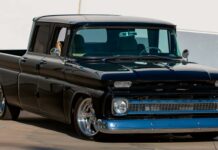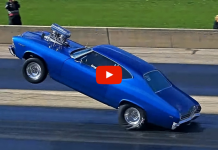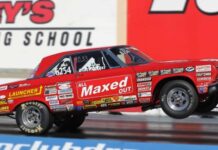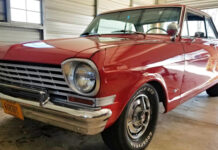Are you looking to fix up a vintage classic before taking it to the streets?

Restoring a hot rod can leave you with a long checklist of things to do. For starters, you’d need the right tools to fix the engine, frames, tires, and all the other parts. You’d also need to choose a glossy new paint coat for it to capture your vision.
Here are some tips and guidelines on how to restore your vintage hot rod into looking sharp as ever before.
Consider Purchase Price and Repair Costs
Buying a cheap hot rod project may strike impulsive buyers as a sweet deal. But beyond the attractive price tag could be a mountain of bodywork and paint jobs that would up the cost considerably.
In cases like this, do your own research and prepare a budget on both upfront costs and future repair costs. Buying a pricier hot rod project might show some daunting figures, but that Tri-five Chevrolet you found at a steal price could need multiple rounds of repairs that could match or even exceed that other fully functional classic.
On top of that, also note the time and effort it’ll take to restore the project. Although the restoration process is half the fun for many, you could be pumping more hours than you’d prefer working on repairs. Find a length of time that sounds reasonable to you and stick to it.
If you’re wary of making a thousand-dollar mistake or don’t have the time, you can get multiple quotes from specially-trained restorationists on sites like DingGo. Using services like these can help you get a better estimate of costs and save you money.
Disassemble the Parts to Replace
Once you have your budget and plan laid out, disassemble the car parts that you want to replace. Take photos beforehand. Once that’s settled, extract the bolts, screws, and nuts you want to replace. Don’t forget to label every piece that comes out of the car too.
A tip is to not disassemble without structure. Even if you consider yourself a car aficionado, you can still overlook or forget the place where a bolt was previously fastened.
Pick the Right Chassis
The chassis and wheel choice will oftentimes cascade to other parts of your hot rod, such as your brakes. Check the measurements, find the right frame and build for your vintage car, and utilize the right tubing for your build. Once you set down the foundation of your car, which should always be first before everything, you can move to the engine/transmission.
No car will have the same budget, form, and measurements. You should be confident in your welding skills before undergoing a project of this calibre. As this is the case, think long and hard about the game plan before undergoing this project, or consult experts.
Give your Hot Rod Some Horsepower
Take a look at the state of your hot rod’s engine block. Is it in need of a rebuild and upgrade? Or is it still serviceable?
To be on the safe side, have your engine block bored, honed, and decked by specialists if you can’t do it yourself. If you require customising with your rig’s own bell housing or adapter, now’s the time to do it too.
Repair the Bodywork
If you don’t want your car covered in sanding dust, have it stripped down as much as possible and refurbished. Make sure the panels aren’t crooked or jammed and make sure the doors and wall studs still do the job. Once you get the car body functional and rust-free, install the bare metal and filler to fix the look.
Prepare for a Mockup
Get your engine between the frame rails of the engine block and make sure that all the wiring runs through in the proper place. Fit any aftermarket radiators and make sure the firewall penetrations are all set in place. This is the step where you have to finalize the placements of the car parts and have all your immediate issues solved before the final assembly.
Paint your Car
The fun part. Spray the base coat and the clear coat to give your hot rod your desired, personalized look. If you want to preserve the car’s vintage patina, use linseed oil and mineral spirits to bring it to as close as the original gloss as possible.
Renovate the Interior
Here’s a checklist of the things to do when renovating your car’s interior:
- Install sound deadening material
- Install heat installation
- Screw the door panels and foot panels
- Mount dash accessories
Make sure all the necessary wiring is finalized and propped up in this stage as well.
Final Assembly
You should have closely followed the car’s journey and part allocation to this point. Install the window panes and attach the respective weather strips.
Once you have that done, go over your rig, do the necessary check-ups and test drives, then you’re well on your way to having your own sweet hot rod.






















